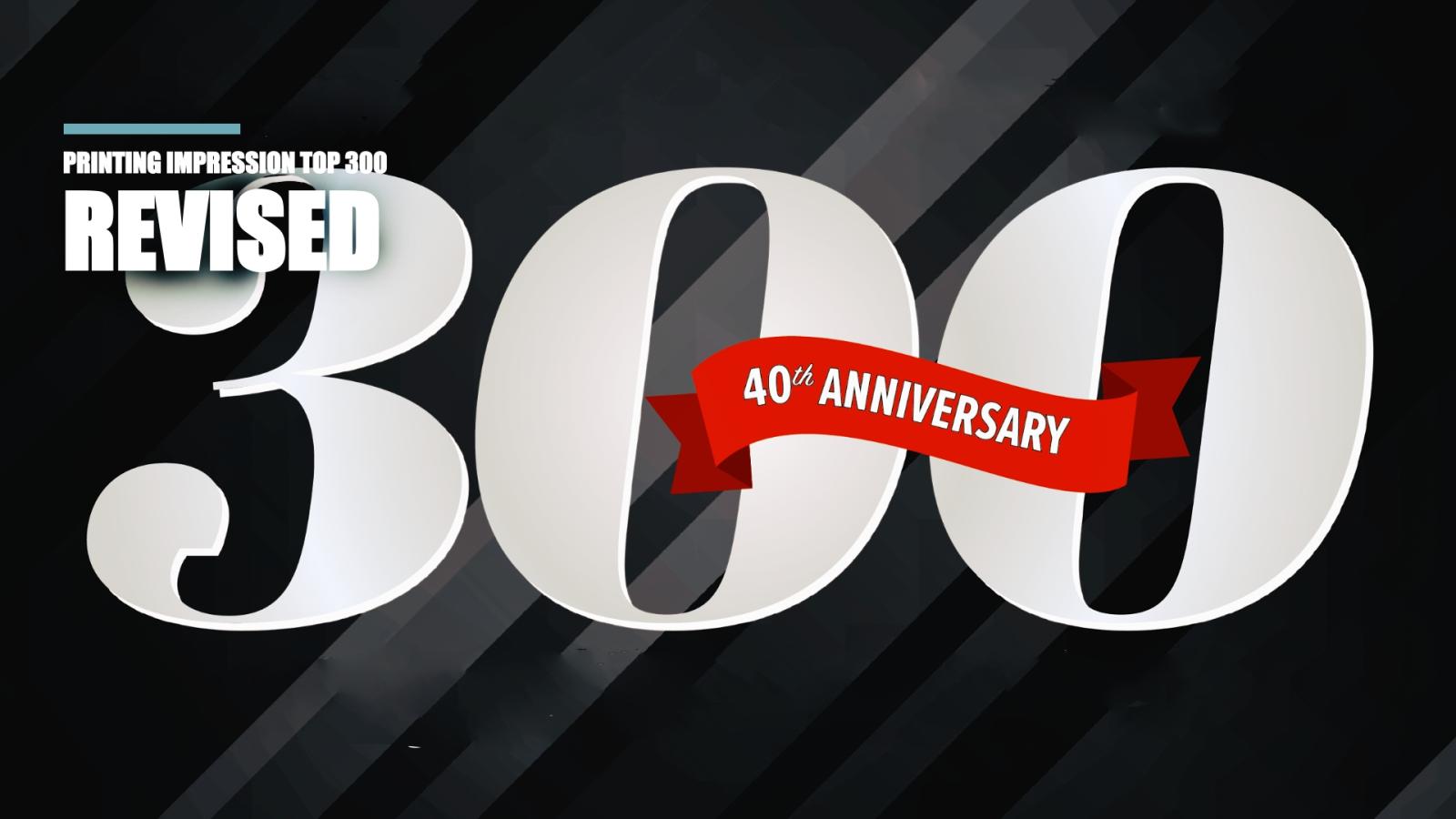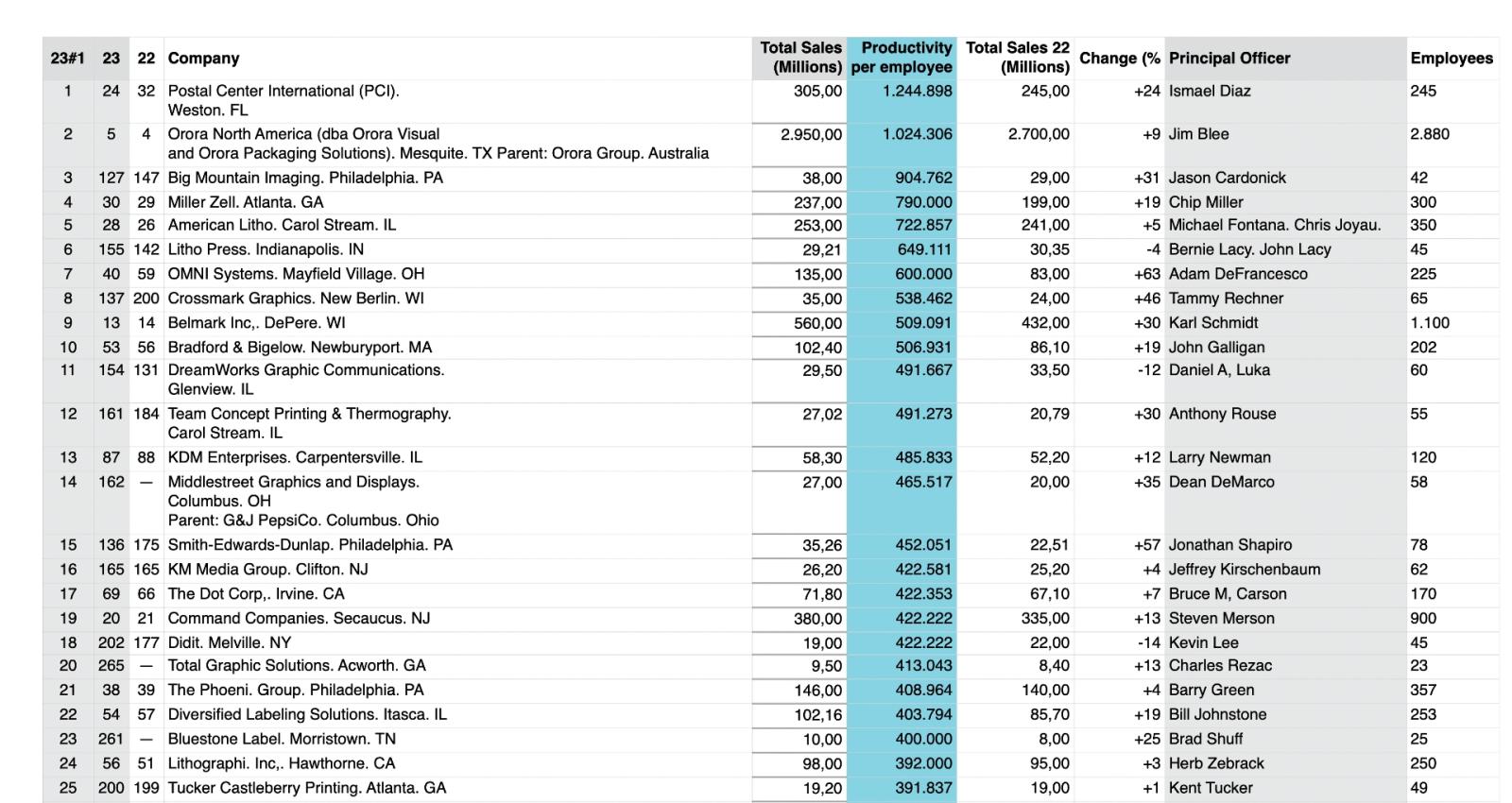
A few days ago, Printing Impressions published their latest Top 300 edition about the printing Industry of America. Once again, I think it's a shame that my friends at Printing Impressions don't add my suggestion of having productivity as a measure to their annual list - so let me explain the idea and why it's essential in my view!
By Editor Morten B. Reitoft
When you get a list of companies based on revenue, you can, of course, see how big the most significant companies are, and you can see how they develop year over year. But how can you relate the data to your company? Well, in my view, the only valuable measure is productivity. Productivity is another word for how efficiently these companies make money; you can compare it directly with your business.
One way of measuring productivity is by taking revenue and divide with head counts - and that's exactly what I have done.

A few funny takeaways when you sort the list based on productivity rather than revenue is that the largest companies, like RR Donnelley, end up as number 227 rather than number one. The Top 300 list also shows some names that are not as known and famous as the RR Donnelley - i.e., number one on the productivity list is Postal Center International (PCI), with a revenue of 305 million dollars, delivered by only 245 employees. That gives them a productivity of $1,244,898 per headcount - and the first thing you have to ask yourself is, why is the productivity so high? What does the company do? And is there any logical reason why PCI is so much higher than the list's average of $262,014?
Visiting the PCI website hints at why productivity is so high - they are a transaction printer serving 2,000,000,000 mail yearly. If a part of their revenue is postage, passed on with zero or tiny profits, this will bump up the productivity. At PRINTING United in Dallas in 2019, I got to talk to Vice President of Operations Perry Fernandes from PCI. Listen to the interview here.
However, my point is that if you are a transactional printer, it makes more sense to look at how efficiently they can develop the revenue and, when compared to your own - use that as a growth objective.
Another printing company on the list is Litho Press, Indianapolis. Based on revenue, they would come in as number 155, but they are number 6 on productivity. The revenue for 2023 was a bit less than $30 million. Still, the revenue was delivered with only 45 employees, giving them a productivity per employee of $649,111 or more than twice the average of the Top 300. We also visited Litho Press - and what is interesting about Litho Press is that they have changed their business over time. As Vice President of Sales Bernie Lacy explains, hadn't they changed to packaging years ago, he doesn't believe the company would still exist. But listen to the interview here - it's a great inspiration in my mind.
The two examples above are essential to understand why the list should add productivity as a measure, but how can you use productivity in your business?
Before continuing - productivity is not a measure of whether you have a good business. Profit is the only thing that counts in that perspective.
Identify your productivity - and again, divide your revenue by the number of full-time employees. Now identify your competitors on the Top 300 list - if they are among them.
If your productivity is lower than your competition, you now have an objective of either bringing headcounts down or an aim to increase your revenue. That knowledge can be used for an action plan that can be made very operational. Typically more sales activities, better marketing and communication, a review of your prices to your customers, etc.
If your productivity is higher than your competitors, now is also the time to make a plan. Assuming that you are profitable, you have one massive advantage in your pursuit of increasing your revenue - you know exactly how much you can afford to spend - because the difference between your and your competitor's productivity is your potential spending - on new employees, activities, new investments, etc.
This is, of course, simplified, but you wouldn't be able to do that without using the available data in a redefined way and making it into something that can be used - rather than just, well - gossip :-)
Tue October 15th
• vigc “ het congres “ ...
VIGC celebrates 25 years of passion and innovation in the Benelux graphic sector.
Fri October 11th
Pack-smart inc. to show...
Pack-Smart will showcase its Delta-X Track and Trace solutions at Pack Expo International 2024 on Booth #W-16075
Emt international welco...
Pecoraro resides in Minnesota and is covering the upper Midwest, West, and Southwest areas of the United States.
Thu September 19th
Hiflow solutions unveil...
HiFlow demonstrates its new tools for label converters and flexo companies
Wed September 18th
Ultimate tech unveils g...
September 4, 2024 – Ultimate Tech announced collaboration with GMG Color
Sun September 15th
Global graphics softwar...
Global Graphics Software and Mark Andy extend partnership to integrate SmartDFE into Digital Series HD press
Thu September 12th
Global graphics softwar...
Global Graphics Software and Dantex announce partnership to integrate SmartDFE into Pico range of UV digital presses
Tue September 10th
New printvis release: e...
New release out this week
Tue September 3rd
Emt international demon...
EMT International is returning to PRINTING United Expo with an end-to-end direct mail digital finishing line on booth C2731, September 10-12
Emt international chame...
EMT International announces its Chameleon RFX roll-to-roll rewinders and unwinders web widths are now designed standard at 23” (584mm).
Subscribe
Subscribe to our INKISH newsletter
Login
New User? Signup
Reset Password
Signup
Existing User? Login here
Login here
Reset Password
Please enter your registered email address. You will recieve a link to reset your password via email.
New User? Signup